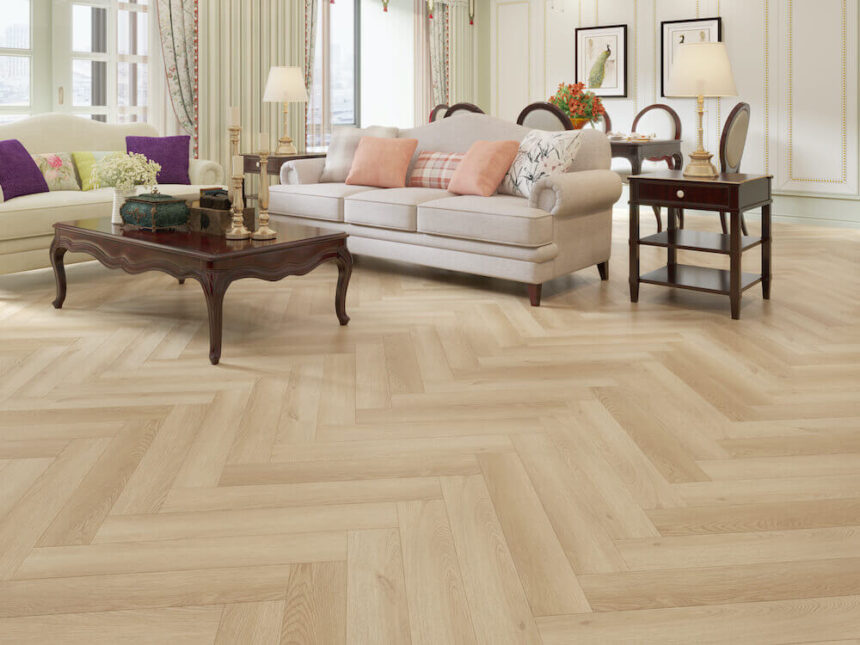When it comes to home flooring options, few choices can match the timeless elegance and enduring appeal of timber parquet flooring. This classic design not only adds warmth and character to any room but also embodies a sophisticated aesthetic that seamlessly blends traditional and contemporary styles. In this blog, we’ll explore the benefits, styles, installation process, and maintenance tips for timber parquet flooring, showcasing why it’s an ideal choice for modern homes.
The Timeless Appeal of Timber Parquet Flooring
Timber parquet flooring has a rich history that dates back centuries, originating in Europe during the 17th century. Its intricate patterns and designs were initially created for the grand estates of nobility and royalty. Today, parquet flooring continues to evoke a sense of luxury while offering a modern twist.
One of the most compelling aspects of timber parquet is its versatility. Available in various wood species, finishes, and patterns, it can complement any interior design theme, from rustic and farmhouse styles to minimalist and industrial looks. The natural beauty of timber, with its unique grain patterns and warm tones, enhances the ambiance of any space, making it a popular choice for living rooms, dining areas, and even bedrooms.
Benefits of Timber Parquet Flooring
1. Aesthetic Versatility
Timber parquet flooring offers a plethora of design options, allowing homeowners to create unique looks tailored to their preferences. From herringbone and chevron to more geometric patterns, the possibilities are nearly endless. This adaptability makes parquet flooring suitable for both modern and traditional interiors.
2. Durability and Longevity
Timber flooring is known for its durability. When properly maintained, parquet flooring can last for decades, making it a wise investment for homeowners. The robust nature of timber allows it to withstand heavy foot traffic, making it suitable for high-use areas.
3. Easy Maintenance
Maintaining timber parquet flooring is relatively straightforward. Regular sweeping or vacuuming and occasional mopping with a suitable wood floor cleaner will keep it looking pristine. In the event of scratches or wear, parquet flooring can be sanded and refinished, restoring its original beauty.
4. Eco-Friendly Choice
Timber is a renewable resource, and when sourced from sustainable forests, timber parquet flooring can be an environmentally friendly choice. Additionally, timber helps regulate indoor humidity, contributing to a healthier living environment.
5. Increased Property Value
Investing in timber parquet flooring can increase your home’s resale value. Potential buyers often seek homes with quality flooring that adds character and warmth, making parquet a desirable feature that can set your home apart in the market.
Choosing the Right Timber Species
Selecting the right timber species is crucial when installing parquet flooring. Different woods have varying colors, grain patterns, and hardness levels. Some popular options include:
- Oak: Known for its durability and attractive grain, oak is a versatile choice that works well in various designs.
- Walnut: With its rich, dark tones, walnut adds sophistication and warmth, making it ideal for elegant spaces.
- Maple: Lighter in color and harder than oak, maple is perfect for a contemporary look.
- Bamboo: An eco-friendly alternative, bamboo is highly sustainable and offers a unique aesthetic.
Installation Process
Installing timber parquet flooring requires precision and expertise. Here’s a simplified overview of the installation process:
1. Preparation
Before installation, ensure that the subfloor is clean, dry, and level. Any imperfections in the subfloor can lead to issues down the line, such as warping or uneven surfaces.
2. Acclimatization
Allow the timber to acclimatize in the room where it will be installed for at least 48 hours. This helps the wood adjust to the temperature and humidity levels, reducing the likelihood of expansion or contraction post-installation.
3. Layout Design
Plan the layout of your parquet flooring, considering the pattern you want to achieve. Using chalk lines, mark the starting point to ensure a straight installation.
4. Installation
Parquet flooring can be installed using different methods, such as glue-down, nail-down, or floating. For DIY enthusiasts, floating installations are often the easiest, as they don’t require adhesives or nails.
5. Finishing Touches
Once installed, apply a suitable finish to protect the timber and enhance its appearance. Depending on the look you desire, you can choose a matte, satin, or gloss finish.
Maintenance Tips
To keep your timber parquet flooring looking its best, consider these maintenance tips:
- Regular Cleaning: Sweep or vacuum regularly to remove dirt and debris. Use a damp mop with a pH-neutral cleaner designed for wooden floors.
- Protective Measures: Place mats at entrances to minimize dirt and grit entering your home. Use furniture pads to prevent scratches from chairs and tables.
- Humidity Control: Maintain a consistent humidity level in your home to prevent the wood from expanding or contracting excessively.
- Refinishing: Depending on foot traffic, consider refinishing your parquet flooring every few years to maintain its luster and protect it from wear.
Conclusion
Timber parquet flooring is more than just a flooring choice; it’s a design statement that adds character and warmth to your home. Its timeless appeal, coupled with modern adaptability, makes it an excellent investment for any homeowner. With the right timber species, proper installation, and regular maintenance, you can enjoy the beauty and durability of timber parquet flooring for years to come. Embrace the elegance of parquet and transform your living space into a stylish sanctuary that reflects your unique taste.



